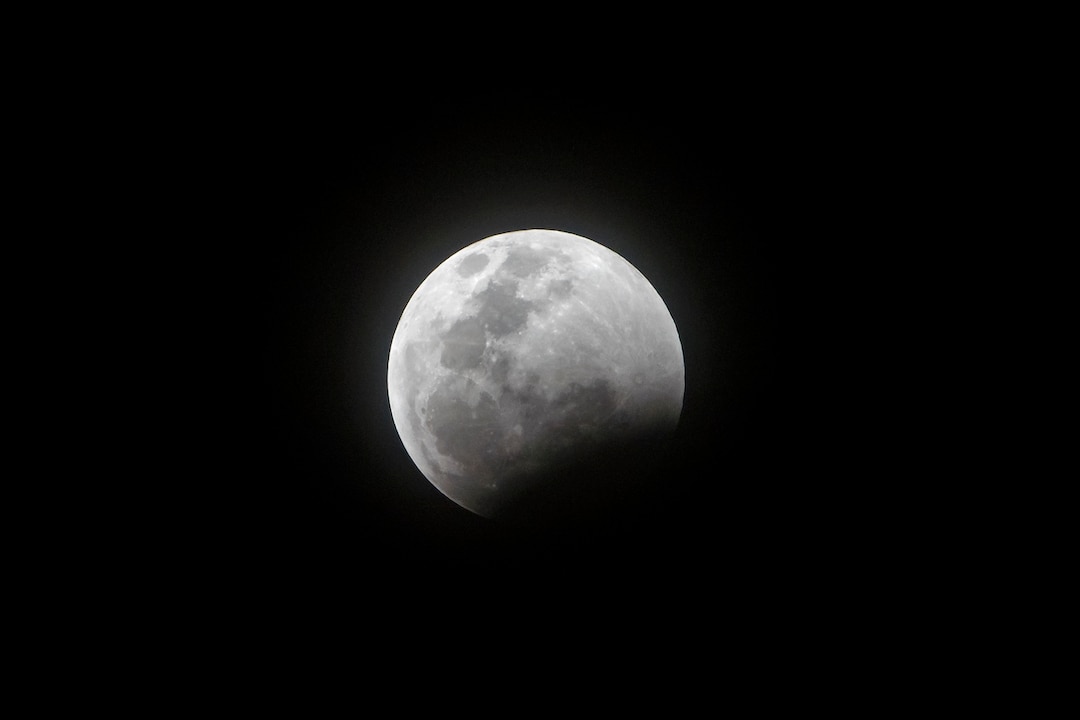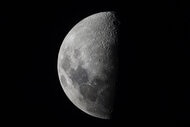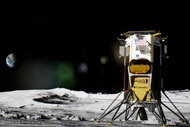Create a free profile to get unlimited access to exclusive videos, sweepstakes, and more!
What to Expect From This Week's Penumbral Lunar Eclipse
The Moon is headed for a rendezvous with Earth's shadow.

Throughout history, humanity has harbored an endless fascination with the Moon. Its impact on our planet, through both its gravitational influence and nocturnally reflected light, has shaped both the landscape and the animals who inhabit it. And every once in a while, it is briefly eclipsed by the Earth and plunged into deep shadow.
It’s no wonder the Moon has inspired tales of hope and horror in equal measure. In the 1997 horror comedy, An American Werewolf in Paris (streaming now on Peacock!) one tourist learns the power of the Moon all too well. When Andy McDermott (Tom Everett Scott) rescues Serafine Pigot (Julie Delpy), he is inadvertently infected, doomed to become a howling, murderous creature at each full Moon. That is, unless he goes on a blood soaked mission to kill and eat the heart of the werewolf who turned him.
RELATED: The Moon’s shadow shapeshifts during rare hybrid solar eclipse
If you’re out stargazing the weekend of May 5, you might have a chance to catch the Aquariids meteor shower, which is estimated to peak early on May 6. The meteor shower coincides with this year’s Flower Moon, the name given to the first full Moon of May, when flowers bloom. And in some parts of the world, the Earth will temporarily eclipse the Flower Moon. Because lunar eclipses, like werewolves, only happen during the Full Moon.
The May 5, 2023 eclipse is what’s known as a Penumbral Eclipse, during which the Moon will only pass through the outer part of Earth’s shadow, known as the penumbra. This lunar eclipse follows hot on the heels of a hybrid solar eclipse which occurred on April 20, 2023. That’s to be expected. Because of the way orbits work, you can always count on solar and lunar eclipses happening within two weeks of one another.
In order to get the dramatic Blood Moons we see during a total lunar eclipse, the Moon has to pass within the Earth’s umbra, the darkest part of its shadow. This time around, the Moon will drift into the penumbra, but will miss the umbra by about 100 miles (160 kilometers). At the Moon’s present distance, the Earth’s umbra stretches 6,000 miles across the sky. Missing it by only 100 miles is roughly the same as missing a 250-yard field goal by four inches.
RELATED: Doomed Lunar Lander Captured a View of Earth That’s to Die For
The eclipse will begin as the Moon passes over the western half of Australia, will reach maximum over the Indian Ocean, and will end as it approaches the east coast of Madagascar, 4 hours and 18 minutes after it begins. It will be visible from a much larger area, spanning from New Zealand and parts of Russia to parts of Africa and Europe. It won’t be visible from North or South America, because it will be day and the Moon will be on the other side of the planet.
For the folks able to witness the eclipse, it will be faint. So faint, that if you didn’t know it was happening, you could miss it altogether. The beginning and end of the eclipse won’t be distinguishable to the naked eye. The penumbra is just too faint at the edges. During totality, however, there will be a noticeable dimming of the Moon’s reflected light, as one edge of the Moon inches to within 100 miles of the Earth’s umbra.
Your next chance at an eclipse will come on October 14, when an annular solar eclipse will trace a path across parts of North and South America, followed two weeks later by a partial lunar eclipse. When you’re out Moongazing, keep a steady eye out for werewolves. They can sneak up on you while you’re looking up.
Catch An American Werewolf in Paris, streaming now on Peacock!















